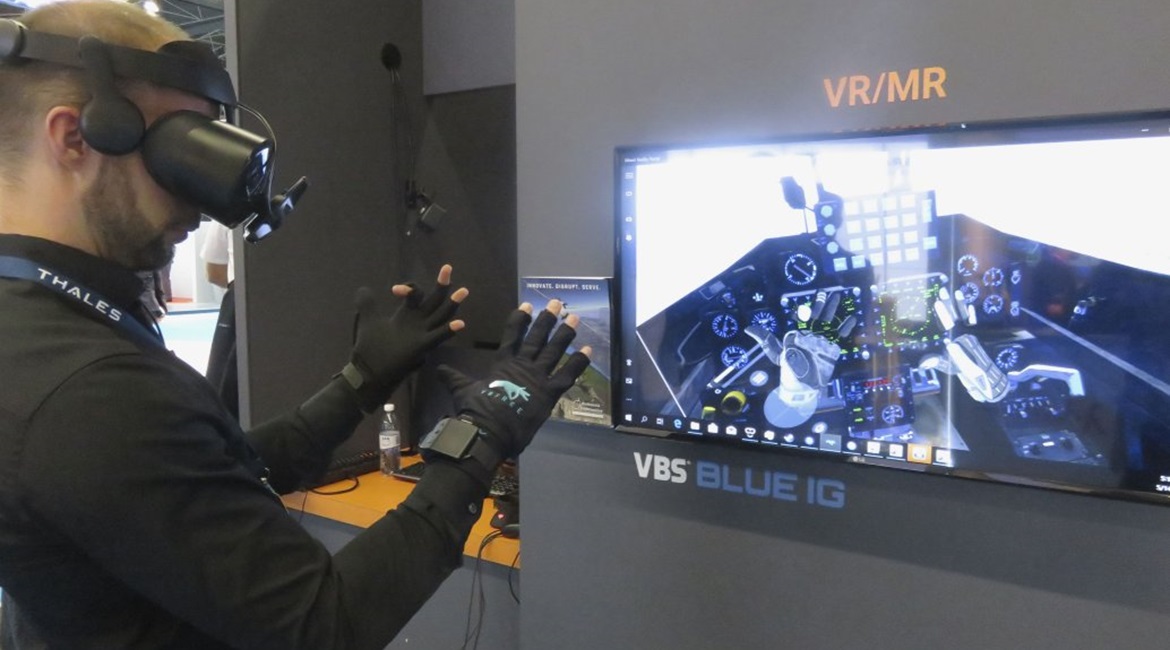
Sensoryx has developed an independent hand tracking system for use in virtual reality (VR) environments and showcased it for the first time at the 2019 International Training and Education Conference (ITEC) in Stockholm in May.

The VRfree system demonstrated at ITEC 2019. The tracking device is mounted on the front of the head-mounted display (HMD). The screen shows the view of the virtual environment shown in the HMD. The hands can be seen in front of the cockpit controls. (Giles Ebbutt)
The VRfree system comprises a pair of lightweight, fingerless gloves that contain inertial measurement units (IMUs) for each finger segment and a wrist unit. The wrist units communicate via a combination of ultrasound and infrared with a central tracking device. The latter is normally mounted on a VR head-mounted display (HMD), but Mark Moutarde, head of sales for Sensoryx, told Jane’s that it could be installed separately, for example, in a flight simulator. It is agnostic to the HMD used.
VRfree tracks the hands and fingers to sub-millimetre levels in real time with a latency of less than 30 ms and displays their position in the virtual environment. This enables users to view their hands in the virtual environment and interact with controls and other equipment. The system operates independently without the need for any other tracking infrastructure such as separate cameras or beacons. It will continue to track the hands outside the HMD’s field of view, which Moutarde observed is useful for after-action review.
VRfree has been in development since 2017. Sensoryx has partnered with Bohemia Interactive Simulations (BISim) and demonstrated the system at ITEC using BISim’s Virtual Battlespace (VBS) Blue image generator (IG), although it is agnostic to the VR system used.
Looking to read the full article?
Gain unlimited access to Janes news and more...




